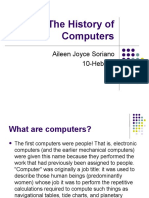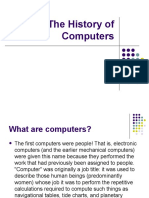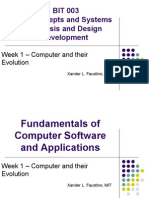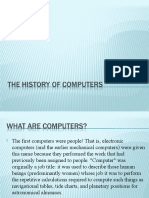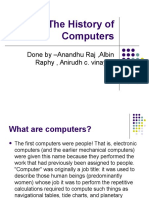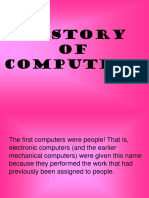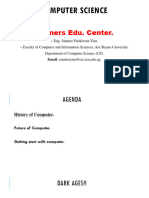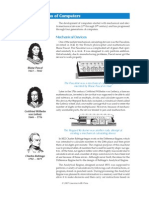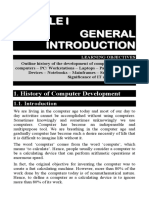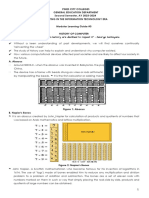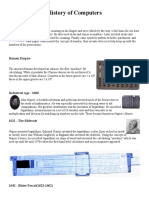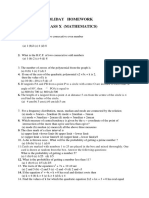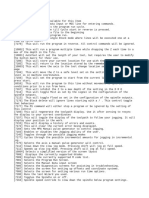0% found this document useful (0 votes)
9 views16 pagesComputrr
Computers are electronic devices that execute instructions to perform calculations and process information. The history of computers dates back to human 'computers' and early mechanical devices like the abacus, evolving through inventions by figures such as Charles Babbage and Ada Lovelace. The development of electronic computers began in the 20th century with machines like ENIAC, leading to modern computers that utilize microprocessors and integrated circuits.
Uploaded by
kirstinenicole lomosbogCopyright
© © All Rights Reserved
We take content rights seriously. If you suspect this is your content, claim it here.
Available Formats
Download as DOCX, PDF, TXT or read online on Scribd
0% found this document useful (0 votes)
9 views16 pagesComputrr
Computers are electronic devices that execute instructions to perform calculations and process information. The history of computers dates back to human 'computers' and early mechanical devices like the abacus, evolving through inventions by figures such as Charles Babbage and Ada Lovelace. The development of electronic computers began in the 20th century with machines like ENIAC, leading to modern computers that utilize microprocessors and integrated circuits.
Uploaded by
kirstinenicole lomosbogCopyright
© © All Rights Reserved
We take content rights seriously. If you suspect this is your content, claim it here.
Available Formats
Download as DOCX, PDF, TXT or read online on Scribd
/ 16


